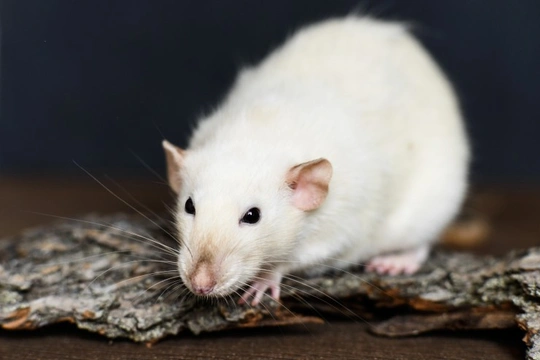
How rats communicate, and how to interpret it
Every single species of animal has their own unique methods of communication in terms of their body language, vocalisations, behaviours and interactions. Additionally, many animals have also evolved to communicate with people in a slightly different way than they do with members of their own species, in order to bridge the gap between our understanding and interpretation of each other’s actions!
This is true for even the smallest of caged pets, like the popular Fancy Rat-and rats are of course very lively, intelligent and loving little animals that are both highly social with other rats and also, that often bond strongly with their human handlers.
In order to keep your pet rats happy and meet their needs, it is important to develop a basic understanding of how rats communicate with each other and with people, and how to interpret this.
In this article, we will look at the various different tools that rats use to communicate, including their body language, vocalisations and behaviours, and how to understand what their different actions mean. Read on to learn more.
Body language
Rats may be small, but they are very expressive, and you can tell a lot about your rat’s mood and temper by learning to interpret their body language.
The rat’s tail is one of the first things to look at, as rats have almost as comprehensive a language of tail flicks and swishes as dogs! Rats may swish their tails from side to side if they are excited, but this same behaviour can also appear in an aggressive rat, if accompanied by a tense, stiff posture.
A rat that is stressed, anxious or frightened may flick their tail from side to side through a large arc of movement, indicating that something about the situation that they are in is upsetting them.
Rats use their front limbs to pull things that they want towards them-such as a treat, or your finger if they want attention-and by the same token, they push things away that they do not like! If you are offering your rat a treat and they push it back towards you, they are letting you know that it is not up to scratch!
A rat that is sitting with its back hunched, head up and paws held up may be feeling either defensive or aggressive, so handle with care, or give them a time-out. This is often accompanied by bristling fur-however, bristled fur can indicate fear, sickness or cold, so always take into account environmental conditions too, and whether your rat may be unwell.
Rats that are interested in something will hold their head up and sniff the air, trying to get more information, and they will also generally hold their ears forwards and perhaps stand up on their back legs to get a better look! A rat that is focusing hard on something or that is confused about what they are seeing and trying to get more information may also move their head from to side to side, which helps to adjust both the depth perception of their eyesight, and garner additional scent information too.
Vocalisations
We tend to think of rodents like rats and mice as being quite noisy animals when talking to each other or interacting with people, but in fact, we as humans do not even have a high enough range of hearing to make out most of the sounds that a rat can make! If you have a cat or a dog as well as your rats and your other pet suddenly leaps up and looks towards the cage for no apparent reason, they have probably overheard a rat conversation that is above your range of hearing!
The range of sounds that we can hear, on the other hand, are almost all related to frustration or distress, or as part of play-related mimicry. If your rats are playing together and one rat seems to be squeaking a lot, they may be being bullied, or protesting after another rat has taken their toy or food!
Longer squeaks and shrieks are almost exclusively used to indicate fear or distress, and this is something that you should always pay attention to.
Another sound that rats can make is known as “bruxing,” and this is the sound your rat makes when they grind their teeth together. This is a common rodent behaviour, and you may see your rat grinding their teeth even if you cannot actually hear it unless you are very close to them. Whilst grinding our teeth is a sign of frustration or annoyance in humans, in rats it is usually a very happy and relaxed sound, indicating that your rat is feeling good and enjoying whatever is going on at that time!
Bruxing is also important for rats to grind down their ever-growing teeth, so if you notice your rat doing it all the time, they may need to have their teeth checked out by the vet to make sure there is nothing wrong.



